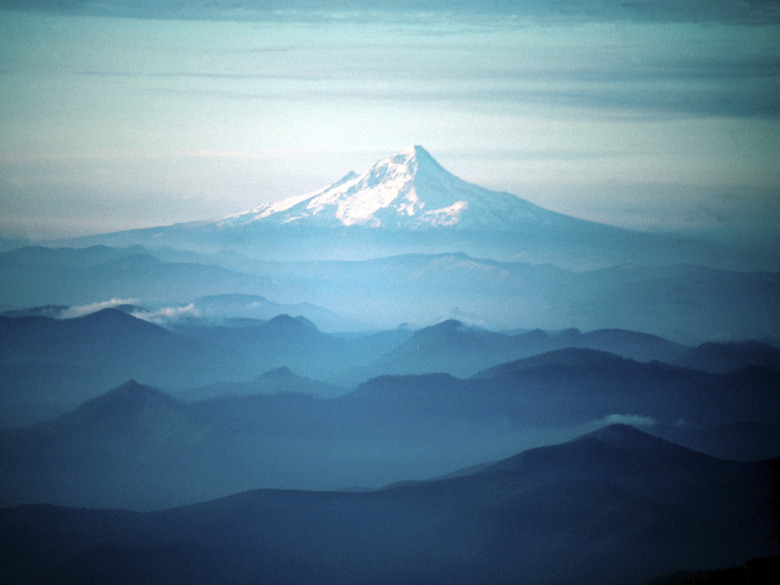What Is The Zone Between The Earth's Core & Crust?
The Earth may look like a solid blue marble, but the planet actually consists of several layers. Between the solid upper crust and the core, you'll find a zone that geologists call the mantle. People did not know that these three layers existed until the 20th century. While nobody has ever seen the Earth's mantle, scientists hope to one day drill a hole deep enough to reach this layer.
Life at the Top of the World
Life at the Top of the World
You live on the Earth's crust along with rocks, mountains and everything else you can see. Although the crust extends about 30 kilometers (18.6 miles) beneath the continents, it's much thinner below the ocean, where it only extends about 5 kilometers (3.1 miles). Below some large mountain ranges, such as the Alps, the crust can be up to 100 kilometers (62 miles) deep.
Two Cores Populate the Center
Two Cores Populate the Center
Located about 2,897 kilometers (1,800 miles) below the surface, the Earth's core is about the size of Mars. It consists of a liquid outer core and a solid inner core that can reach temperatures of 5,538 degrees Celsius (10,000 degrees Fahrenheit). The inner core is under extreme pressure equal to the weight of about 3.5 million atmospheres. Heat from the core causes tectonic plate movement that builds mountains on the Earth's surface.
The Mantle's in the Middle
The Mantle's in the Middle
Much cooler than the smoldering core, Earth's mantle is the largest layer and extends up from the core almost to the surface. Molten rock that volcanoes erupt comes from a zone in the mantle that lies between 100 and 200 kilometers (62 and 124 miles) below the Earth's surface. The top of the mantle and the Earth's crust meet to form the lithosphere. It holds the planet's oceans and continents. When heat from the core reaches the mantle, it transmits most of that heat to the bottom of the lithosphere.
Cores in Space
Cores in Space
NASA reports that the moon may have a core similar to the Earth's. Findings suggest that the moon's solid inner core has a radius of about 241 kilometers (150 miles). NASA's analysis also shows that a liquid outer core made of iron surrounds the inner core. Unlike on Earth, however, the moon may have a partially molten shell that surrounds the liquid outer core.
Cite This Article
MLA
Lee, Kevin. "What Is The Zone Between The Earth's Core & Crust?" sciencing.com, https://www.sciencing.com/zone-between-earths-core-crust-17764/. 24 April 2017.
APA
Lee, Kevin. (2017, April 24). What Is The Zone Between The Earth's Core & Crust?. sciencing.com. Retrieved from https://www.sciencing.com/zone-between-earths-core-crust-17764/
Chicago
Lee, Kevin. What Is The Zone Between The Earth's Core & Crust? last modified March 24, 2022. https://www.sciencing.com/zone-between-earths-core-crust-17764/
